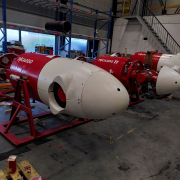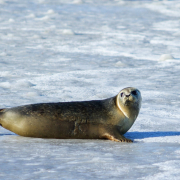Shipment of three Tocardo T-1 tidal turbines
Three T-1 turbines delivered in Pembroke
On behalf of the board of Tocardo BV I’m proud to share this news with the rest of the world. After winning the tender last year, preparations, procurement, lots of manhours and persistence we have managed to ship three Tocardo T-1 tidal turbines. The bi-directional turbines have been successfully transported towards Pembroke dock where they will be installed on QED Naval’s Subhub community scale platform. The full systems integration will be conducted at the quayside. This is much safer and logistically easier than connecting up tidal turbine systems offshore.
The T-1 turbine
The T-1 is Tocardo’s community scale solution. By generating energy in a predictable and cost-effective way the T-1 is the best tidal turbine in its market segment with power outputs ranging from 40 to 100 kW. Due to its relatively small size, it can be installed in shallow waters (4 meters and deeper). The turbines are made to last with very minimal maintenance. The design lifetime is at least 20 years.
Cutting down LCOE
Logistics operations have a significant impact on the LCOE of our technology. We are convinced that it is better to install a larger number of medium sized turbines; turbines that can be brought to a (remote) project location by means of regular available (road) transport. The three Tocardo T-1’s will be utilized on the novel Subhub design. Subhub is a submersible, gravity based, foundation platform that supports every need of tidal turbines through life. After the system integration at the quayside the cost for the installation offshore is quite low because for the deployment QED Naval will be using low-cost harbor tugs only.
A big thank you
A big thank you goes out to: the team, contractors and all supply chain partners who helped us with their service and expertise to achieve this new milestone for Tocardo BV.


